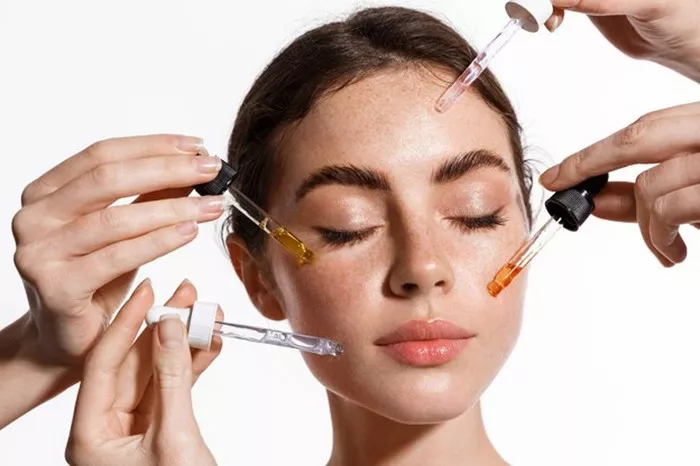If you’ve ever trimmed your beard, mustache, or even the fine hairs on your cheeks, you might have heard a common belief: “Cutting facial hair makes it grow back thicker.” This idea has been around for decades, but is it true?
As a professional hairstylist with years of experience in the grooming industry, I’ll explain the science behind hair growth, how scissors affect facial hair, and why this myth persists. Let’s dive in!
Understanding Hair Growth: The Basics
To answer this question, we first need to understand how hair grows. Hair is made of a protein called keratin. It grows from tiny sacs under the skin called hair follicles. Each follicle has its own life cycle, which includes three phases:
Anagen Phase (Growth Phase): The hair actively grows from the follicle. This phase lasts 2–7 years for scalp hair but is shorter for facial hair (a few months to a year).
Catagen Phase (Transition Phase): Growth stops, and the follicle shrinks. This lasts about 10 days.
Telogen Phase (Resting Phase): The old hair falls out, and the follicle becomes inactive for 2–4 months before restarting the cycle.
Facial hair growth is influenced by hormones (like testosterone), genetics, age, and health. For example, men typically develop thicker facial hair during puberty due to hormonal changes.
The Myth: Why Do People Think Cutting Hair Makes It Thicker?
The belief that cutting hair makes it thicker likely comes from two observations:
Blunt Ends vs. Tapered Ends:
When you cut hair with scissors, you create a blunt tip. Over time, uncut hair naturally tapers at the end (like a sharpened pencil). Freshly cut hair feels coarser because the blunt tip is wider. This can create the illusion of thicker hair, even though the actual thickness hasn’t changed.
Hair Length and Perception:
Short hair stands upright (e.g., stubble), making it appear denser. Longer hair lies flat, which can look thinner. After trimming, the shorter hairs may give the impression of a fuller beard or mustache.
However, these are optical illusions. Cutting hair does not change its natural thickness, color, or growth rate.
What Science Says About Cutting Hair
Let’s break down the facts:
Hair Thickness Is Determined at the Follicle
The thickness of hair depends on the size of the hair follicle. Larger follicles produce thicker hairs; smaller ones make finer hairs. Cutting hair above the skin does not affect the follicle.
Think of it like mowing grass: Trimming the blades doesn’t change the roots.
No Impact on Growth Rate
Hair growth happens at the follicle level, regulated by hormones and genetics. Cutting the visible part of the hair (the shaft) has no connection to the follicle’s activity. Your beard won’t grow faster or slower because you trimmed it.
The “Thicker” Illusion Explained
When you shave with a razor, you cut hair at the skin’s surface. As it regrows, the tip of the hair is initially blunt (like a flat cylinder). Over time, exposure to air, water, and friction tapers the tip, making it feel softer. Scissors-cut hair also starts with a blunt tip, but since scissors are often used on longer hair, the contrast between old and new growth is less noticeable than with shaving.
Scissors vs. Razors: Does the Tool Matter?
Many people confuse trimming with shaving.
Let’s clarify:
- Scissors: Trim hair to a desired length. They create a clean, blunt cut but leave hair longer.
- Razors: Cut hair very close to the skin, often causing the “sharp tip” illusion as hair regrows.
Neither method changes the hair’s thickness. However, razors can cause ingrown hairs or irritation, which might make hair appear coarser if the skin becomes inflamed. Scissors are gentler and reduce this risk.
Why the Myth Persists
Even though science disproves it, the myth survives for several reasons:
Confirmation Bias:
If someone trims their facial hair and later notices it looks thicker, they might blame the scissors—even if the change is due to aging, hormonal shifts, or better grooming habits.
Cultural Anecdotes:
Older generations often passed down grooming tips without scientific backing. For example, some cultures believe shaving a baby’s head will give them thicker hair later—a similar misconception.
Marketing Tactics:
Some brands promote products claiming to “thicken hair” by trimming split ends. While trimming improves hair health (reducing breakage), it doesn’t alter natural thickness.
How to Actually Make Facial Hair Look Thicker
If your goal is a fuller-looking beard or mustache, try these science-backed tips instead:
Maintain Healthy Skin:
Cleanse and moisturize your face. Healthy skin supports healthy hair follicles. Use products with ingredients like jojoba oil or vitamin E.
Boost Nutrition:
Eat protein-rich foods (eggs, fish), vitamins (Biotin, Vitamin D), and minerals (zinc). These nutrients strengthen hair.
Avoid Over-Trimming:
Let hair grow for 4–6 weeks before shaping it. Frequent trimming can make hair look uneven.
Use Styling Products:
Beard balms or fibers can temporarily add volume to thin areas.
Consider Minoxidil:
This FDA-approved topical treatment can stimulate hair growth in some people. Consult a dermatologist first.
When to See a Professional
If you’re concerned about patchy or slow-growing facial hair, visit a dermatologist or licensed esthetician.
They can check for issues like:
- Hormonal imbalances
- Nutrient deficiencies
- Alopecia (hair loss conditions)
A barber can also help you choose a beard style that suits your hair’s natural texture and density.
Conclusion
Cutting facial hair with scissors does not make it grow thicker. The thickness, growth rate, and texture of your beard or mustache are controlled by factors scissors can’t influence: genetics, hormones, and overall health. However, regular trimming can keep your facial hair looking neat and healthy—just don’t expect it to work miracles!
The next time someone warns you about scissors thickening your beard, you’ll know the truth: It’s all about perception, not biology. Happy grooming!
How to Fix Broken Hair at Roots: Effective Repair Guide
How to Use Conditioner on Afro Hair: A Complete Guide
Top 5 Conditioners That Work for Every Hair Type


